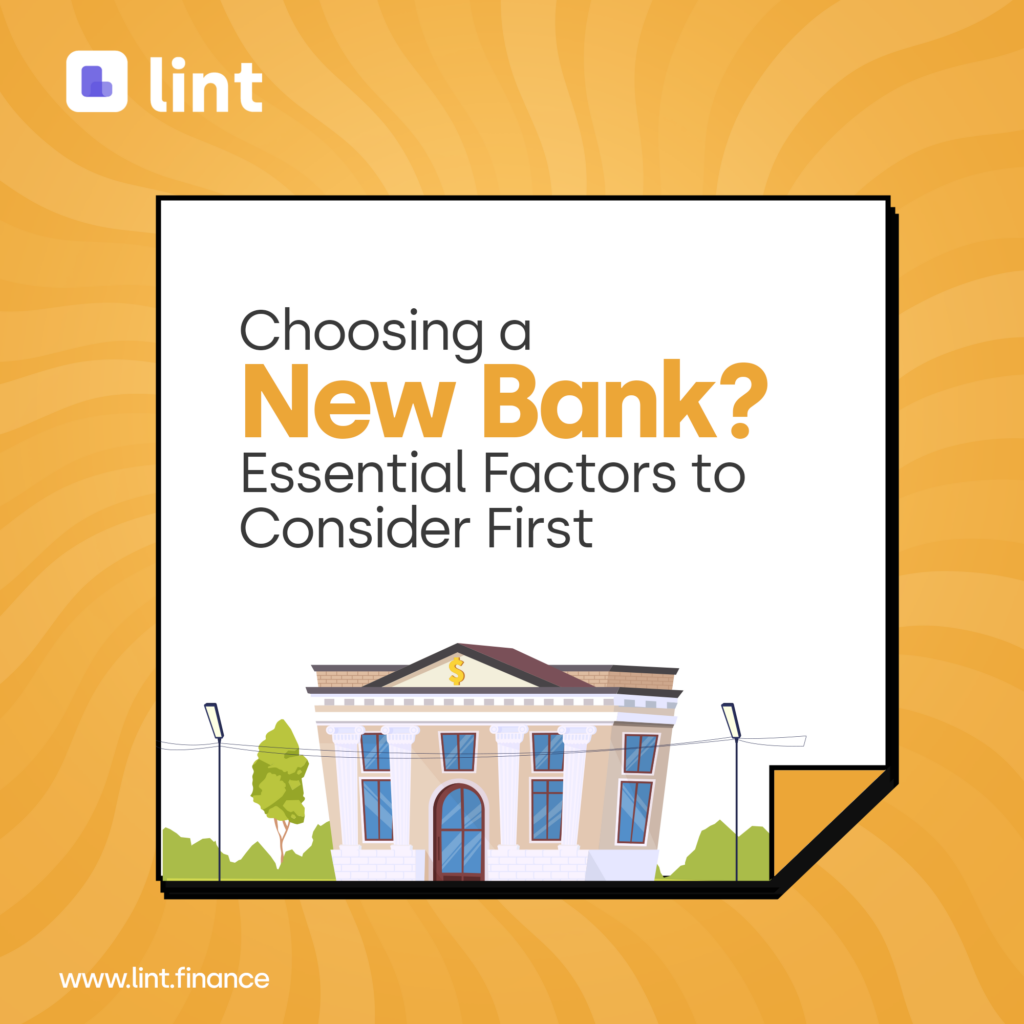
Just like any decision with multiple options, you might find yourself needing to switch to a new bank, whether due to poor service from your current one or the desire to expand your financial holdings. However, before making the move, there are several key factors to consider to ensure you choose the right bank for your needs and avoid potential pitfalls.

Different banks offer varying levels of service, charge different fees, and pay different interest rates on your money. This means finding the best bank, or the best online bank, for you isn’t a one-time decision. As your financial goals evolve, you may need to reevaluate your choice multiple times throughout your life.
In this article by Lint, we’ll break down the factors involved in choosing a new bank which will help you to make a wise choice.
Why Do You Want a New Bank?
The first question to ask yourself is: Why? If you can’t pinpoint a clear reason, you might not need to switch at all. What’s the point of a baseless chase, right? You should have clear reasons—whether it’s dissatisfaction with your current bank or specific features you’re looking for in a new one. This clarity will help you identify the best fit.
What Type of Bank Do You Want?
Not all banks are the same. The best choice depends on your needs, preferences, and financial goals. Here are the main options:
- Traditional Banks: These are the brick-and-mortar institutions with physical branches and ATMs. They often provide in-person customer service, which can be helpful if you prefer face-to-face interactions. However, they may have higher fees compared to other options.
- Online Banks: These operate entirely (or mostly) online, meaning lower overhead costs and lower fees for you. While they offer convenience and competitive rates, customer service is usually remote, which can be frustrating if you prefer in-person support.
For more insights on virtual transactions, check this out, Virtual Transactions
Consider Fees and Features
Once you’ve decided on the type of bank, compare fees and interest rates. Even small charges can add up, so opt for banks with the lowest fees. Common charges to watch for include:
- Monthly maintenance fees
- Overdraft fees
- ATM withdrawal fees
- Wire transfer fees
- Check-related fees (returned, cashier’s, certified)
Is the Bank Conveniently Located?
Even if you prefer online banking, there may be times you need to visit a branch, whether to deposit cash, resolve an issue, or sign loan documents. If the bank isn’t nearby, it could become a hassle. Check their branch and ATM locations to ensure easy access when needed.
What’s the Bank’s Reputation?
A bank’s reliability matters. Research its track record, customer reviews, and financial stability. Look for:
- How long it’s been in operation
- Customer satisfaction ratings
- Financial health (profitability, capital adequacy)
Does It Offer Online and Mobile Banking?
Digital banking makes managing your money easier. Check if the bank provides:
- A user-friendly mobile app
- Online bill pay and transfers
- Mobile check deposits
Smaller or rural banks may lag in technology, so confirm their digital capabilities if this is important to you.
What Fees Come with Opening an Account?
Before signing up, ask about:
- Account maintenance fees
- Minimum balance requirements
- Charges for ATM use, overdrafts, or paper statements
Comparing these costs across banks will help you avoid unpleasant surprises.
Conclusion
When searching for a new bank, be cautious—scammers and fake banks exist. A good bank should:
- Provide easy access to your money
- Charge reasonable fees
- Offer competitive interest rates
- Have reliable online/mobile services
- Deliver excellent customer service
- Be trustworthy with your finances
Make a list, compare your options, and choose the one that best fits your needs. Remember, you can always switch later or open another account if your first choice isn’t perfect.
Take your time, weigh your options, and pick wisely—your financial peace of mind depends on it!




Leave a Reply